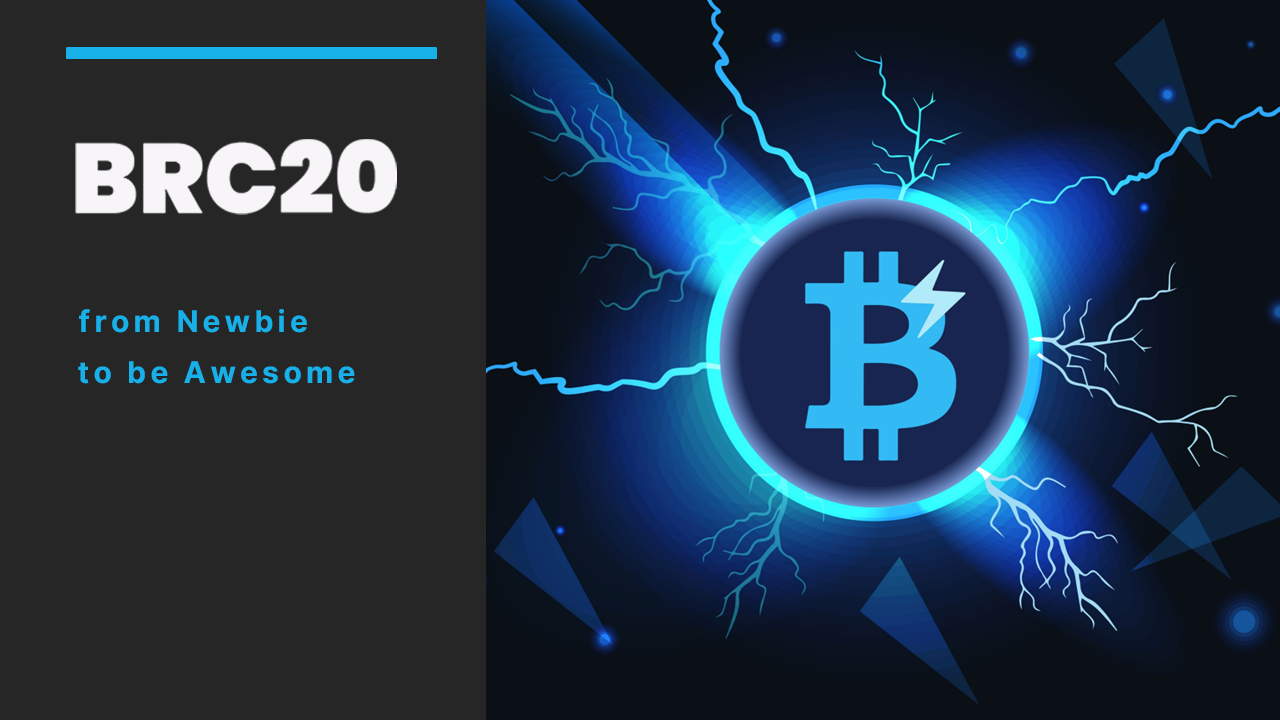BRC-20, from Newbie to be Awesome
- Tokenview
- 发布于 2024-01-26 23:50
- 阅读 3037
BRC-20 Token : a paper agreement, a static TEXT attached to Bitcoin, anything might happen as no live code.

BRC-20 named B is completely different with ERC-20 named E. It has a similar name, but what's the difference between B and E? B will bring about an electronic version of a text protocol without any code control, and E will guide to join a series of bright activities which is transaprently coded on blockchain.
What is the definition of BRC-20?
On Nov. 19, 2015, ERC-20 is proposed, which means Ethereum Request for Comment and the number 20 refers to the recommendation identifier for this protocol. It is a standard for creating a token used in the Ethereum blockchain and virtual machine. Time comes to the early March 2023, "BRC-20" is born, Bitcoin Request for Comment and the number 20 is the same number as ERC-20, that intends to represent a token protocol.
What is the intrinsic kernel of BRC-20?
BRC-20 tokens are inscribed with JSON data, providing additional functionalities like token deployment, minting, and transfer on the Bitcoin network. For sure, there are defined standard format of BRC-20 token: ● Protocol: Always "brc-20" ● Operation - One of 3 different operations ○ Deploy: used to Deploy the BRC-20 token ○ Mint: used to Mint new tokens ○ Transfer: used to Transfer function ● Ticker symbol: A 4-letter ID ● Max supply: set max supply of the brc-20 ● Mint limit: If letting users mint to themsleves, limit per ordinal ● Decimal precision: default to 18 Example, a new deployed CAT-

Well, definition is very clear, but the reality is "no running code" behind it. These TEXT are inscribed on Bitcoin, if this token is planned to run, there must be a third party, project party, controlling it somewhere outside Bitcoin.
Why not to run it on Bitcoin to make it transparency? A good question, and the reason to make you become to be awesome from newbie, read through below the const and limitation in BRC-20 part.
What is the const and limitation in BRC-20?
Every BRC-20 token exists due to "Taproot" on Bitcoin. Bitcoin is using UTXO model to securely finish the transaction verification, the UTXO model is always finding the best verification script to improve scalability, privacy and flexibility, to make the network more efficient, more secure, less fee.
Taproot generated, Bitcoin address is upgrading from P2PKH(pay to public key hash), to P2SH-P2WPKH(hybrid version of pay to script hash plus pay to witness key hash), to P2WPKH(pay to witness key hash), to a major upgrade P2TR(pay to Taproot) in Nov 2021.
Taproot offers better security, lower fees, and more flexible multi-key transactions. And more critical, Taproot enables more advanced scripting, enables more complex smart contracts to be built on Bitcoin. This is the key, from this point of view, BRC-20 is generated and starts to play on Bitcoin. But Bitcoin has a 4MB block size limitation, thus it is very limited to put long smart contract code to run, it is okey to put small size BRC-20 token, but it does not work with more codes.
Answering your question, why not to run it on Bitcoin to make it transparency? You can run TEXT version BRC-20 due to Taproot technology involved, but you can not run live version BRC-20 because no enough block size.
Now, as a BRC-20 awesome player, you need to know BRC-20 on Bitcoin is a TEXT protocol, not live code, whatever you saw in BRC-20 token, whatever they follow the token spec or not, they may transfer without any mint, they may break the 4-letter tick, do not surprise, it is a static TEXT attached onto Bitcoin, anything can happen. But only one const, they run on Taproot enabled wallet with size limitation.
Yes, risk is there, no transparency, but a tip is to know the Taproot supported wallet, the address is starting with "bc1p". Do not transfer or use the non-Taproot supported wallet when running BRC20-token, please ensure to identify taproot enabled "bc1p" address whenever you play BRC-20 token on Bitcoin.
Conclusion
BRC-20, copied from ERC-20, traced to Oridinals protocol, is an electronic version of a text protocol without code control, various situations may arise. It allows minting without deployment, and the first mint can be transferred. Minting and transferring can be done without the need for an operation. The success of BRC-20 totally depends on the project party.
When this wind blows onto the EVM chain, engraving is like the EVM version of BRC-20, with no code control and completely narrative-based. Therefore, when it comes to "BRC-20", one must carefully consider the project party.
- 基于 BitVM 的桥接合约与紧急更新 219 浏览
- 《比特币开发哲学》:升级 507 浏览
- DAT 的公司模式终结了吗?比特币 treasury 公司的未来发展 496 浏览
- B-SSL:一种无需限制条款的保险柜合约架构 959 浏览
- B-SSL:比特币安全签名层 436 浏览
- Miniscript 与可编程的比特币 822 浏览
- 比特币 - Ark 101 - Saravananmani 1146 浏览
- Miniscript 101:技术指南 1269 浏览
- BIP8、BIP9 与现代软分叉激活方法 1005 浏览
- 理解静默支付(一) 1878 浏览
- CSFS 密钥串联及其在 LN-Symmetry 中的应用 1027 浏览
- MuSig2 与 FROST:Taproot 上的多签名方案 1379 浏览

